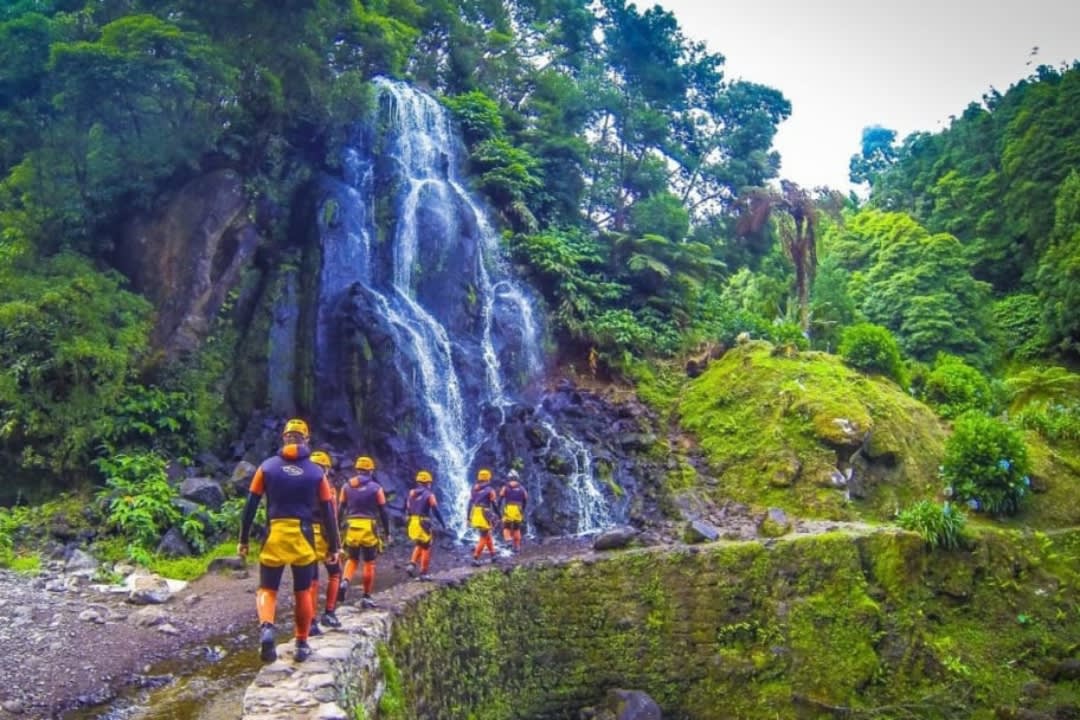
Wild Azores: Outdoor activities shaped by the nature
Discover stunning adventures shaped by volcanic peaks, lush valleys, and dramatic black sand beaches. Immerse yourself in the untamed beauty of the Azores.
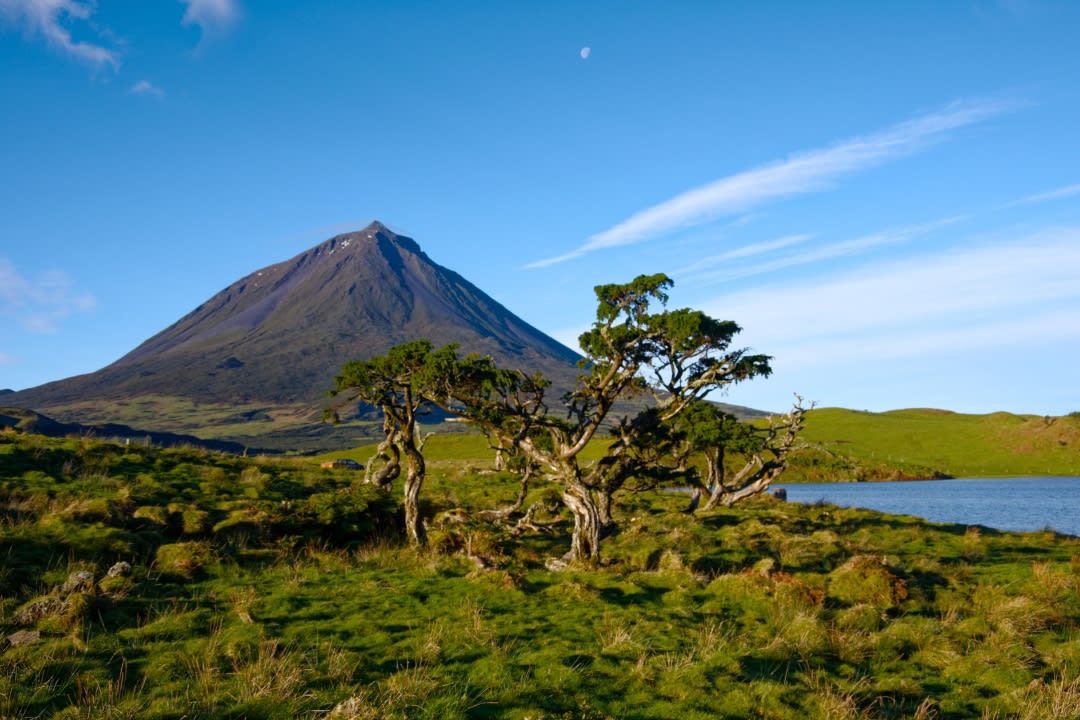
Feel the Earth's pulse under your feet as you hike the rim of ancient calderas, plunge into subterranean lava tubes, and glide above crater lakes in a kayak, this is a volcanic adventure in the Azores, where each step, splash, and breath connects you to a landscape still being shaped by fire and water.
The Azores archipelago rises like a cluster of emerald jewels from the vast Atlantic Ocean, a testament to the powerful geological forces that continue to sculpt this volcanic paradise. Formed at the meeting point of three major tectonic plates, which makes it one of only eight places on Earth where such a convergence occurs, the region boasts a landscape shaped by constant transformation. Volcanic activity has carved dramatic peaks, crater lakes, lava fields, and rugged coastlines that seem almost too wild and wondrous to be real. This ever-changing terrain not only defines the islands’ breathtaking beauty but also shapes the thrilling outdoor adventures that await every visitor. From hiking ancient calderas and diving into lava-sculpted seascapes to paddling across crater lakes or coasteering along basalt cliffs, the Azores invite you to experience nature’s raw creativity up close.
Understanding the geology of the Azores opens a window into the story of Earth itself, revealing how fire and water have woven the fabric of these islands. Each island showcases unique volcanic features that create distinct playgrounds for adventure seekers. Whether you are drawn to the towering volcanoes of Pico, the vast crater lakes of São Miguel, or the dramatic cliffs of São Jorge, the land beneath your feet pulses with history, energy, and possibility. The following exploration of the Azores’ volcanic landscapes will uncover how geology breathes life into unforgettable activities that make this region a destination like no other.
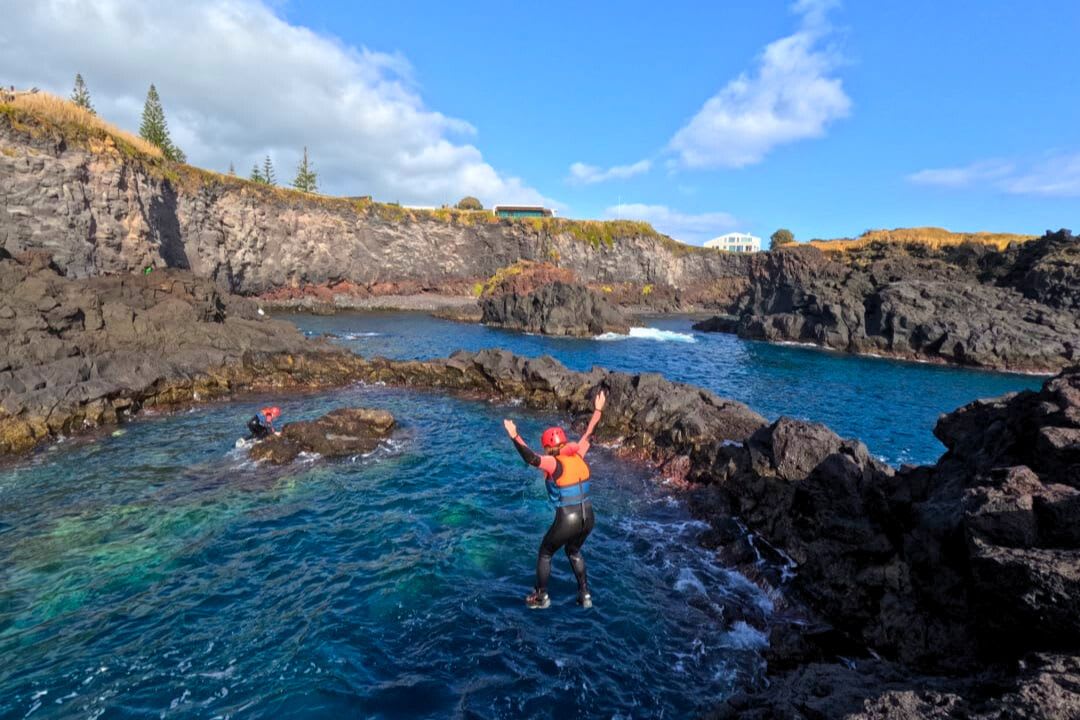
Around São Miguel’s southern coast, the charming village of Caloura harbours one of the most exhilarating adventures available. Coasteering in São Miguel invites you to traverse basalt cliffs etched with ancient lava flows, swim through hidden grottoes, scramble across tide-worn rocks and leap from heights between one and eight metres above crystalline water. Guides welcome you with a safety briefing before outfitting you in a wetsuit, helmet and life jacket. Then the scent of wet volcanic stone mingles with salty sea spray as you step into a natural playground sculpted by fire and Atlantic surf. In calmer moments, the water turns transparent, and you can glimpse fish darting around submerged pillows of lava, while the roar of waves in nearby caves underscores the island’s living geology.
Further inland, São Miguel reveals one of its most iconic wonders in the Sete Cidades Volcano. This ancient caldera shelters the enchanting twin lakes of Lagoa Verde and Lagoa Azul, their striking colours divided only by a narrow bridge. Surrounded by steep crater walls and blanketed in hydrangeas and wild greenery, this natural amphitheatre tells the quiet story of its last eruption in 1444. Hiking in Sete Cidades along the crater rim offers breathtaking views and a peaceful communion with nature where every step carries echoes of geologic time.
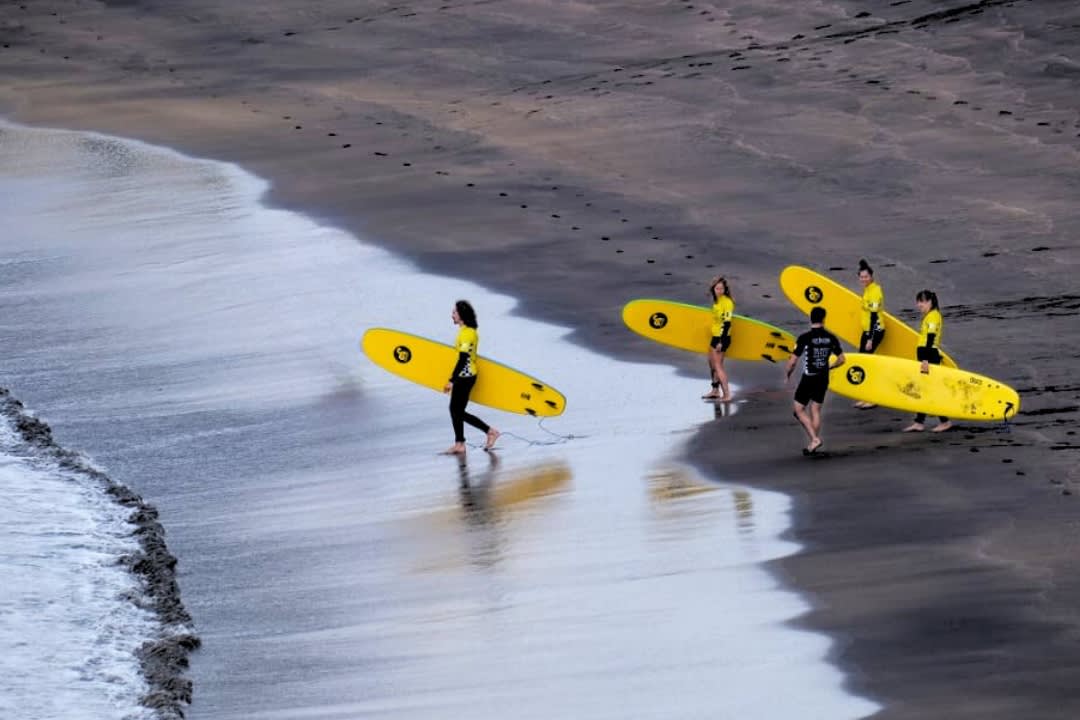
Not far from here, you can switch from adrenaline to calm and immerse yourself in the volcanic seabed around Vila Franca Islet. The snorkelling trip around the islet of Vila Franca do Campo leads you into a semicircular crater lagoon formed by an underwater eruption. Floating above lava platforms alive with tropical fish and occasionally even rays, you feel like you are swimming through a volcanic aquarium, framed by the soft hum of dripping stalactites from submerged caverns.
If the ocean tempts you again, surfing lessons in São Miguel on Santa Bárbara Beach provide another volcanic backdrop. Warm Atlantic waves roll against black-sand shores born of cooled lava, and your board cuts through the swell beneath steep cliffs. Every ride is set against formations shaped by prehistoric eruptions, the land’s fiery origin present in each cresting wave.
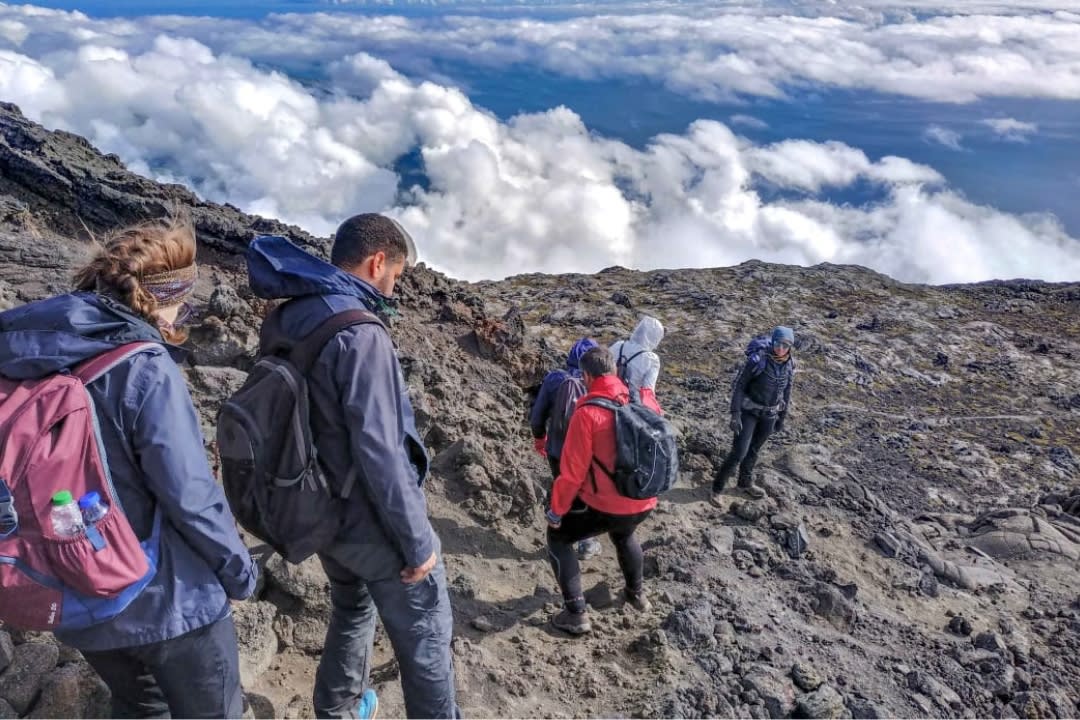
Rising majestically from the Atlantic Ocean, Mount Pico is the highest mountain in Portugal, standing at 2,351 meters. This iconic stratovolcano is famous for its perfectly shaped cone, a striking symbol of the Azores and a testament to the island’s volcanic origins. Its last known eruption occurred around 1718, a reminder of the fiery forces that shaped this remarkable landscape.
Climbing Mount Pico is a journey through vast fields of rugged lava rock and ancient volcanic terrain. As you ascend, the early morning light casts shadows across the rough basalt, drawing you closer to the clouds and unveiling breathtaking panoramic views from the summit. On a clear day, nearby islands seem to float on the horizon, stacked like cards against the deep blue sky. The air here carries whispers of the earth’s powerful history, inviting reflection on the timeless dance between fire and stone.
Beyond its geological grandeur, Pico is also known for its unique cultural heritage. The volcanic vineyards that cling to the lava fields around the mountain have earned UNESCO World Heritage status. These vineyards create a striking patchwork of green amid black volcanic soil, showcasing human resilience and harmony with nature.
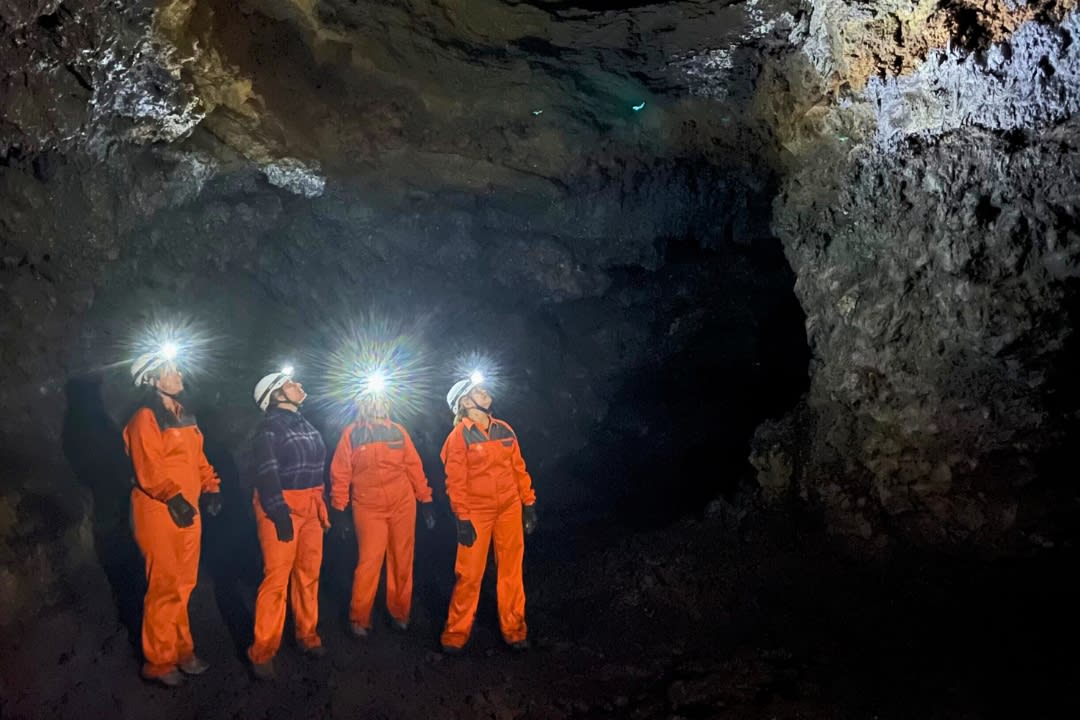
For those seeking to explore beneath the surface, caving adventures in Pico offer a chance to delve into ancient lava tunnels. Guided excursions wind through shadowed passages carved by molten rock, revealing a mysterious underground world that speaks to the island’s fiery past and invites awe at nature’s sculpting power.
After the climb and cave explorations, the adventure continues at sea. Whale watching tours depart from harbours framed by volcanic cliffs, gliding over deep waters where underwater volcanic seamounts foster rich marine life. Visitors often encounter majestic sperm whales, playful dolphins, and migrating baleen whales in their natural environment. Witnessing these gentle giants alongside the dramatic volcanic backdrop offers a profound connection to the wild beauty and enduring spirit of the Azores.

Santa Maria is famed as the oldest island in the Azores, with a unique landscape of golden sandy beaches and gentle rolling hills that set it apart from its volcanic siblings. Known for its warm climate and clear, calm waters, it offers some of the best conditions in the archipelago for underwater exploration. Beneath the surface, Santa Maria reveals a rich volcanic heritage, with underwater lava formations that create vibrant habitats for a dazzling variety of marine life. The island’s blend of serene coastline and hidden underwater wonders makes it a true paradise for snorkellers and scuba divers alike.
Santa Maria’s volcanic heritage extends beneath the waves, where the snorkelling excursion on the island of Santa Maria offers a vibrant display of life woven into cooled lava formations. When you slip into the water, the sun filters through a lucid surface that seems to glow from within, illuminating coral-encrusted basalt outcrops and winding swim-through. This incredible snorkelling experience in Santa Maria leads you gently across a patchwork of reefs, where colourful fish dart around rock ledges and rays occasionally glide in from the deep. The water feels welcoming, cooled just enough by Atlantic currents to refresh without biting and weights of salt cling to your skin as you emerge, senses sharpened by this immersion into volcanic beauty.
For those seeking deeper exploration, the guided adventure dives around Santa Maria offer double dives at renowned local sites like Dollabarat, Formigas, and the Ambrósio cave. Submerged lava pinnacles rise beneath you, draped in black coral and teeming with marine life. In afternoon light, you may drift beside hovering mobula rays or peer into underwater galleries carved by ancient eruptions. The sea is warm, and the visibility often stretches beyond twenty metres, creating a sense of complete immersion in an unreal volcanic aquarium.
As your journey unfolds, dive into Terceira’s captivating underwater caves and lava tunnels, where ancient volcanic forces meet the vibrant life of the sea. With a snorkelling experience in Terceira, you slip beneath the surface into crystalline waters that illuminate vast chambers carved by fire and time, surrounded by shimmering fish and delicate marine flora that dance in the gentle currents. Whether gliding through peaceful waters or exploring hidden nooks beneath the waves, you are invited to witness a living history shaped by nature’s rawest elements.
The volcanic landscapes of the Azores create living stages where every adventure unfolds in harmony with nature’s most elemental forces. When you climb peaks shaped by ancient lava flows, follow the paths of rivers carved through volcanic rock, paddle along coastlines framed by basalt formations, or dive into the deep Atlantic to meet its marine giants, you are stepping into a world moulded by fire, water, and time. These islands do not simply serve as backdrops; they shape and enrich every moment of your journey with their rugged textures, timeless stories, and raw energy.
For those eager to explore further, Manawa offers a diverse range of outdoor activities that unlock the islands’ secrets and celebrate their unique character. Discover more unforgettable adventures and let the Azores inspire your next journey by reading our article on How nature shapes outdoor activities across the archipelago.